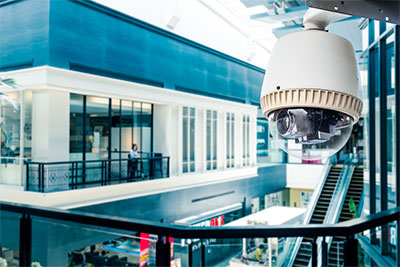 The use of global security technology continues to skyrocket and extend better service to businesses. The global market for video surveillance equipment grew more than 12 percent in 2014, reaching $15.9 billion in sales. Some industry analysts don’t expect the growth to stop and predict sales to surpass $42 billion by 2020.
The use of global security technology continues to skyrocket and extend better service to businesses. The global market for video surveillance equipment grew more than 12 percent in 2014, reaching $15.9 billion in sales. Some industry analysts don’t expect the growth to stop and predict sales to surpass $42 billion by 2020.
One area that has seen some major growth in demand is high definition and megapixel resolution security cameras. Because these cameras allow for wider coverage and image detail, many business owners are incorporating these high resolution cameras for better security at a fraction of the cost.
However, even with all of the advances in the surveillance industry, not all businesses or security companies are jumping on the bandwagon of high-definition cameras. In fact, some businesses are abandoning the surveillance trend and thinking outside the box for unique and inexpensive approaches. For example, Dropcam, acquired by Google’s Nest Labs in June 2014, offers self-installed cameras and annual subscriptions for cloud storage. This acquisition follows the current trend that allows people the option to install their own security cameras at a cheaper rate.
In China, dramatic surveillance innovations in recent years have opened up cloud storage in a market where there are 1 billion potential users.
Trends in Electronic Surveillance
According to a 2014 report from IHS, surveillance trends will move more towards panoramic network cameras, and expect to see a 60 percent steady increase in sales from year to year. This camera is in high demand, particularly with retail, airport and casinos, because the panoramic feature is designed to monitor wide, indoor areas.
In addition to panoramic cameras, audio surveillance has also seen an increase in popularity this year. In 2013, 7 out of every 10 network cameras sold some form of audio capability, despite agreement from systems integrators that these features are rarely used. Some estimate less than 7 percent utilize the feature.
Optimize Your Video Surveillance
The surveillance and security industry is constantly changing. With the upgrades and improvements in the market, security has become easier to use, more personalized to meet the consumers’ needs and more cost effective. As you move forward implementing a video surveillance system in your business, the first thing you need to ask is “what is your objective of having the system?” By having a clear idea of what you want, you can skip the security systems with all the hoopla and focus on a surveillance camera that meets your specific needs and requirements.
When thinking about implementing surveillance, consider these tips to ensure you are getting the most out of you surveillance plan.
Tip 1: Increase security around your business by having the cameras installed in key areas around and inside the building. These areas should focus on assets, such as vaults, merchandise and stock, as well as access points, which covers anywhere that allows access to the business, including windows and doors.
Tip 2: Placement is essential to give the best possible view and image. Try to place cameras in corners facing downward. This provides a better viewing angle and limits possible interference. Previously, most cameras were limited by the range of the wires. Now, wireless cameras give you the freedom to get the best angle without worrying about connecting.
Tip 3: Monitor high-traffic areas where both customers and employees have access. Often, employers focus surveillance efforts on consumers but fail to remember that employee theft is in many instances, more likely. A recent study by the University of Cincinnati found that 64 percent of small businesses have been victims of employee theft.
Protect Your Business, Inside and Out
For optimal coverage, verify cameras are installed correctly for optimal exposure and protection. In many cases, particularly for larger businesses or businesses with a lot of assets, hiring a trusted and proven security business will ensure security success.
In the end, regardless of what kind of security system you have, having surveillance is a valuable piece of equipment and ensures some piece of mind when you are away.
(Vivint Business specializes in commercial security and works hard to offer innovative technology that gives business owners simple surveillance and security tools. With their business automation and security system, Vivint Business gives wireless controls of lights, temperature, and locks.
Vivint makes it a point to stay up with the latest trends, upgrades, and improvements that are being made in the security system industry to deliver wireless surveillance cameras that can view up to 30 feet in the open air, and can survey areas both horizontal and vertical.)